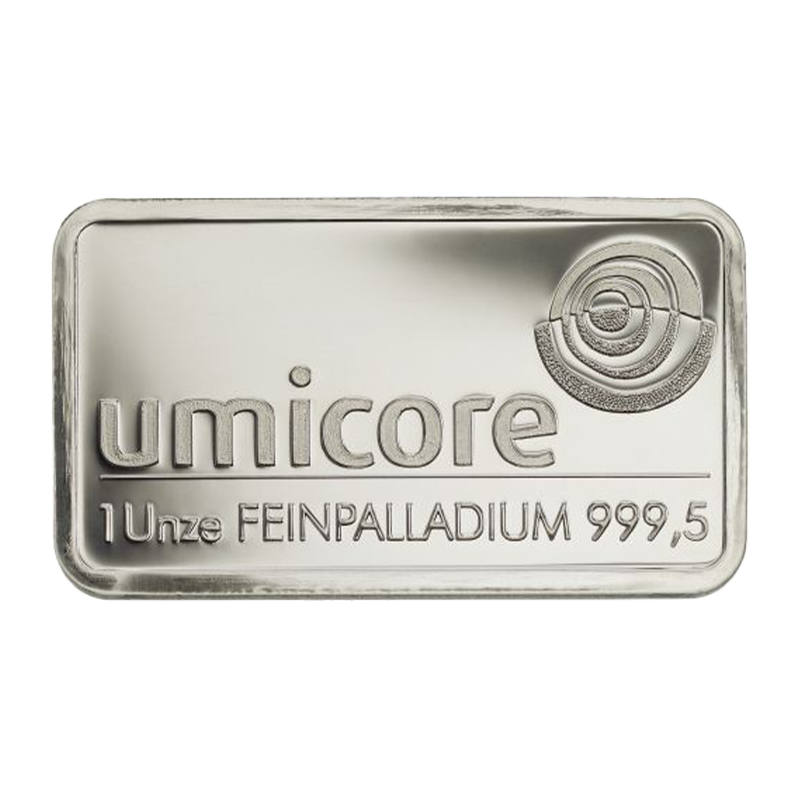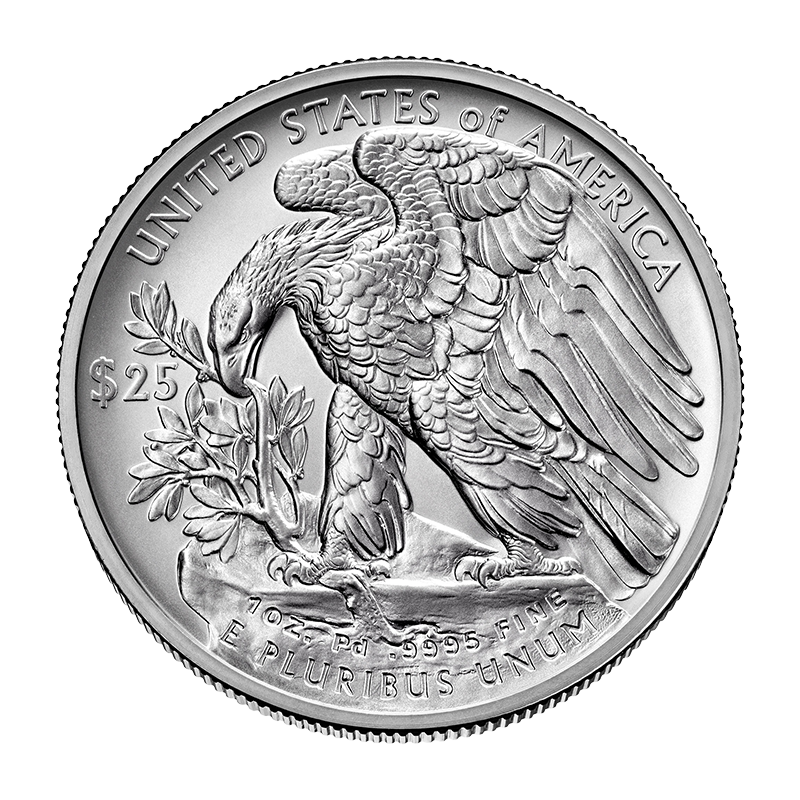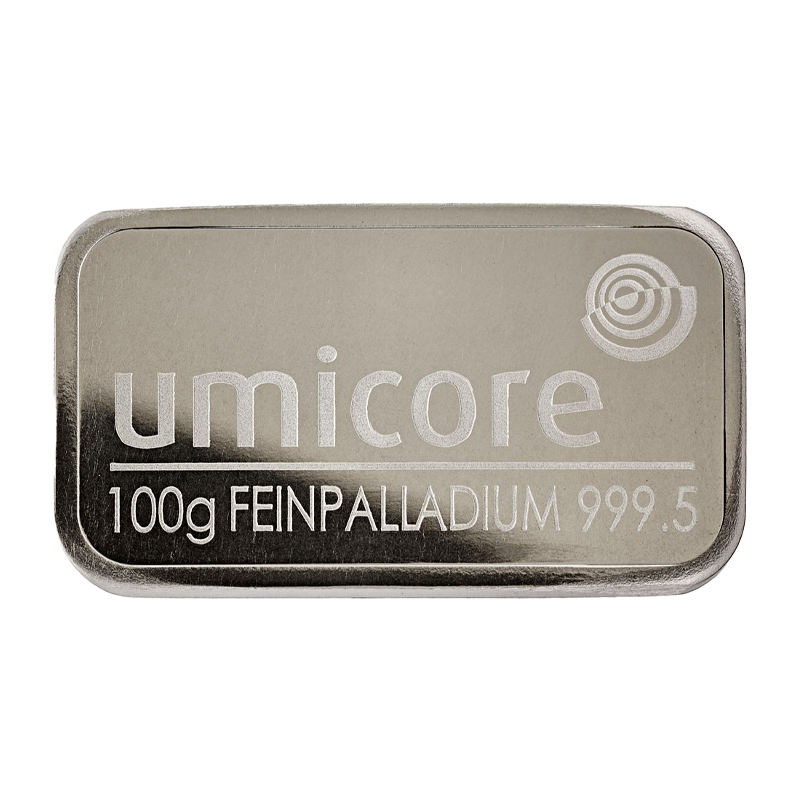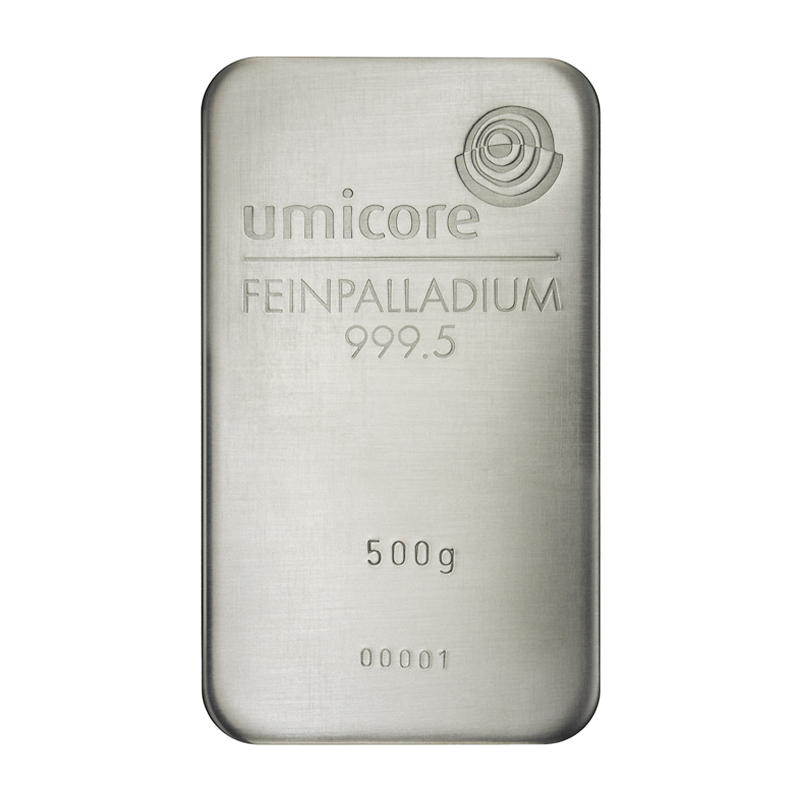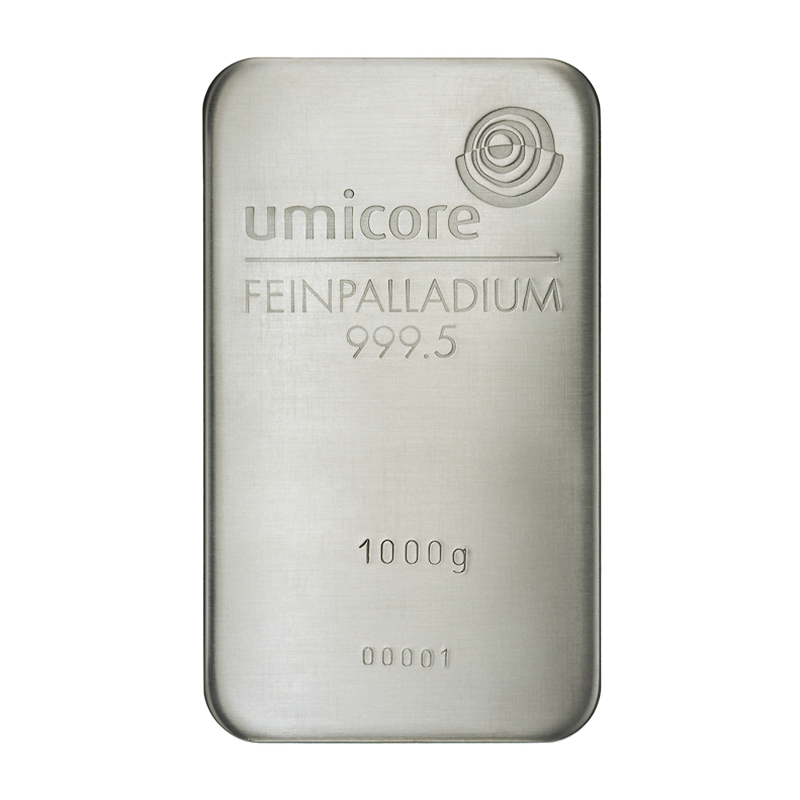Current palladium price 2025
Palladium is one of the most valuable precious metals in the world and is becoming increasingly popular with investors as a commodity. The current palladium price reflects the particular market dynamics of this rare metal, which plays an important role both in industry and as an investment. At Geiger Edelmetalle, you will always receive transparent information on the current palladium price and benefit from our many years of expertise in precious metals trading.
Precious metals prices at a glance:

Interesting facts about the palladium price
The palladium price is subject to various influencing factors that are of great importance to you as an investor. In order to make informed decisions when buying or selling this valuable precious metal, it is important to understand the background to market developments. In the following section, you will find comprehensive information on the most important aspects that influence the value and price development of palladium.
What does the palladium price say?
The palladium price shows you the current market value of this rare precious metal and is usually quoted in US dollars per troy ounce. One troy ounce corresponds to 31.1035 grams of pure palladium. The price is determined by the interplay of supply and demand on the international commodity exchanges, with the spot price representing the current value for immediate delivery.
The palladium price fluctuates daily and reflects various market influences: from industrial demand, particularly from the automotive industry, to geopolitical developments in the producing countries. When you look at the current palladium price, you not only get a snapshot of the market value, but also important indications of the global economic situation and industrial development.
What influences the palladium price?
Industrial demand from the automotive industry
The automotive industry is the largest consumer of palladium, as the metal plays a central role in catalytic converters for petrol engines. If global automobile production increases, the demand for this valuable industrial metal automatically rises. Your investment in palladium therefore benefits directly from the development of global vehicle production.
Supply and production volumes
The supply of palladium is very limited, as only a few countries have significant deposits. Russia and South Africa together control around 80% of global production, which is why political developments in these regions can have a significant impact on the palladium price. Production shortfalls or export restrictions often lead to significant price increases.
Speculation and investor behaviour
As with other precious metals, speculation also plays an important role in palladium price trends. Institutional investors and hedge funds can amplify short-term price fluctuations through their market activities. For you as a private investor, this means both opportunities and risks in the performance of your palladium investment.
Currency development of the US dollar
As palladium is traded internationally in US dollars, the exchange rate has a significant influence on the price trend. A weaker dollar makes the precious metal more favourable for investors with other currencies and can boost demand. The performance of your palladium investment therefore also depends on the performance of the US currency.
Who determines the current palladium price?
The current palladium price is not determined by a single institution, but is the result of continuous trading on various international exchanges and trading centres. The most important reference for the palladium price is the New York Mercantile Exchange (NYMEX), where the majority of global palladium trading takes place. Millions of US dollars are traded here every day and the official spot price is determined.
In addition to NYMEX, the London Precious Metals Market also plays an important role in price determination. Traditionally, a large proportion of physical precious metal trading takes place in London, which has a direct influence on the market price. The exchanges in the USA and Europe operate with a time lag, meaning that a current palladium price is available practically around the clock.
The price is determined by the free play of market forces: buyers and sellers determine the respective price at the current date and level through their trading activities. For you as an investor, this means that the palladium price always reflects the current market consensus and is transparent. At Geiger Edelmetalle, we are guided by these internationally recognised reference prices in order to offer you fair and market-driven conditions.
Historical performance: milestones for the palladium price
1970s and 1980s: The beginnings of the modern palladium trade
Organised trading in palladium only began in the 1970s, when the metal discovered by William Hyde Wollaston in 1803 gained increasing industrial importance. At this time, the price of palladium was still relatively low, ranging between 50 and 150 US dollars per troy ounce. The development was characterised by growing demand from the jewellery industry and the first industrial applications, although the markets were still comparatively small and not very liquid.
1990s: Establishment as an industrial metal
The 1990s marked a turning point for palladium when the automotive industry increasingly discovered the metal for catalytic converters. During this decade, the palladium price fluctuated between 100 and 400 US dollars per troy ounce, with increased industrial demand leading to significantly higher volatility. Towards the end of the 1990s in particular, dependence on Russian supplies became apparent, leading to the first major price spikes.
2000s: First major price rally
The 2000s saw the first major price rally for palladium. At the end of 2000, a supply disruption in Russia led to palladium reaching a record high of over 1,000 US dollars per troy ounce in January 2001. This dramatic rise was fuelled by speculation about Russian export bans and had far-reaching consequences: Ford Motor Company was forced to declare a loss of US$1bn after the company hoarded palladium and the price plummeted by around 75% in the wake of a correction. After the resumption of Russian supplies, the palladium price fell back to around 315 US dollars by 2002.
2010s: Volkswagen scandal as a turning point
The decade was characterised by strong fluctuations and a decisive event in 2015. The Volkswagen emissions scandal fundamentally changed the market dynamics: while platinum fell to a 6.5-year low of USD 924.50, palladium rose by 7.2% to USD 649 on 23 September 2015. This development resulted from the expectation that diesel vehicles would lose popularity and that petrol engines - which require palladium in their catalytic converters - would be in greater demand. In 2017, the price of palladium exceeded the price of platinum for the first time in over a decade, marking a historic shift in the market.
2020s: record prices and geopolitical turbulence
The 2020s marked both highs and lows for palladium. Initially, 2021 was the weakest year for the metal, mainly due to the semiconductor shortage, which affected automotive production. The dramatic turning point came with the war in Ukraine: from around 1,900 US dollars at the start of 2022, palladium shot up to an all-time high of 3,440.76 US dollars on 7 March 2022, surpassing the previous record high of 2021. The price of palladium currently stands at around 1,072 US dollars per troy ounce (as at June 2025), reflecting the ongoing volatility of this important industrial metal.
Historical performance clearly shows how geopolitical events, industry trends and supply bottlenecks influence the palladium market. For you as an investor, this development illustrates both the opportunities and the risks associated with investing in this rare precious metal.
Palladium price forecast: where will we be in the future?
The future of the palladium price is characterised by competing trends that harbour both opportunities and risks for investors. Analysts expect a sideways price trend with downward pressure in 2025, with the palladium price likely to fluctuate between USD 900 and USD 1,000.
Factors in favour of rising palladium prices
Hydrogen technology as a new beacon of hope
The emerging hydrogen economy could give palladium a second chance. The metal has unique properties for fuel cells and the hydrogen vehicle market is expected to grow significantly by 2030. However, the practical realisation of this technology remains limited.
Geopolitical uncertainties
Russia's dominant position with around 40% of global production remains a decisive price factor. The current tense situation may lead to further supply bottlenecks and corresponding price rises.
Factors in favour of falling palladium prices
Electromobility as the biggest threat
More than 80% of palladium demand comes from the automotive industry, but increasing electrification is significantly reducing this demand. As electric vehicles do not require palladium, any further increase in market share will lead to a direct drop in demand.
Structural market surplus
Experts predict that the palladium market will turn into a surplus from 2025. This will be reinforced by increasing recycling and the return of production volumes to historical capacity.
Realistic forecast for your investment planning
Over the next few years, analysts expect a moderate increase to around 1,100 to 1,200 US dollars by 2026. In the long term, palladium could reach the 2,000 US dollar mark again by 2030 if hydrogen technologies prevail.
Conclusion
Palladium remains a fascinating but volatile precious metal whose price trend is strongly influenced by industrial demand, geopolitical developments and changes in the automotive industry. The future holds both opportunities from new technologies such as hydrogen fuel cells and challenges from electromobility. At Geiger Edelmetalle, we are at your side with our decades of expertise to provide you with the best possible advice on your palladium investment and help you to utilise the opportunities of this special precious metal for your portfolio.

